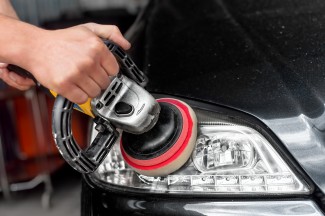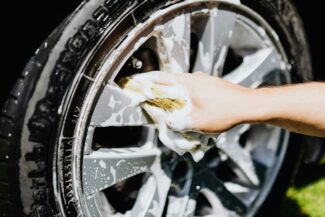
How Often Can You Polish A Car
Keeping your car looking its best requires regular maintenance, and polishing plays a vital role in preserving its shine. However, the frequency at which you should polish your car depends on various factors such as the paint condition, driving conditions, and personal preferences.
In this comprehensive guide, we will delve into the topic of car polishing and provide you with valuable insights on how often you should consider giving your car that extra shine.
From understanding the benefits of polishing to identifying signs that indicate it’s time for a fresh polish, we’ll equip you with the knowledge you need to make informed decisions about maintaining your vehicle’s appearance.
Signs Your Car Needs Polishing
Recognizing the signs that your car needs polishing is crucial to maintaining its appearance. Here are some telltale signs that indicate it’s time for a fresh polish.
First, if your car’s paint appears dull or lacks the vibrant shine it once had, it’s a clear indication that polish is needed to revive its luster. Second, swirl marks and fine scratches can make the paint surface look hazy, especially under certain lighting conditions. If these marks become prominent, it’s time for a polishing session to minimize their appearance.
Lastly, keep an eye out for paint contaminants such as bird droppings, tar, or tree sap that have bonded to the paint surface. If left unattended, they can cause long-term damage and require more extensive polishing or even paint correction procedures.
Car Polish Vs. Car Wax
The main difference between car polish and car wax lies in their purpose and function. Car polish is primarily used for paint correction, fixing medium to light surface scratches, and removing imperfections like swirl marks, scratches, and oxidation from the paint surface. It contains abrasive particles that help level the paint and restore its smoothness and gloss.
On the other hand, car wax is a protective product that adds a layer of shielding to the paint. It forms a barrier against UV rays, water, and contaminants, providing a glossy finish and enhancing the paint’s durability. While car polish improves the appearance by correcting flaws, car wax safeguards the polished surface and preserves its shine.
Benefits of Car Polishing
Car polishing offers a range of benefits that go beyond simply enhancing the visual appeal of your vehicle. Here are some key advantages of car polishing:
Restores Paint Gloss and Shine
Over time, a car’s paintwork can become dull and lose its shine due to exposure to UV rays, contaminants, and general wear. Light machine polishing a car effectively removes surface imperfections, such as swirl marks, scratches, and oxidation, restoring the paint’s original gloss and luster. This process can make your vehicle look newer and more attractive.
Removes Surface Contaminants
The exterior of your car is exposed to various contaminants like dirt, dust, road grime, bird droppings, tar, and tree sap. These substances can bond to the paint surface and, if left untreated, cause damage and staining. Polishing helps eliminate these contaminants, preventing them from causing further harm and maintaining a cleaner, smoother surface.
Enhances Paint Clarity and Depth
A well-executed polish can significantly improve the clarity and depth of your car paint. By leveling out the surface and removing fine scratches, light is reflected more evenly, resulting in a richer and deeper color appearance. This effect creates a vibrant and more visually appealing finish.
Prepares the Surface for Protective Measures
Polishing is an essential step before applying protective coatings like waxes, sealants, or ceramic coatings. By removing imperfections and contaminants, the surface becomes smoother and more receptive to these protective layers. This enhances their durability and ensures a better bond, increasing the longevity of the protective measures.
Preserves the Paint’s Integrity
Regular polishing helps maintain the overall health and integrity of your car’s paint. By removing contaminants and imperfections, you prevent them from causing further damage, such as corrosion or deeper scratches. Additionally, polishing can slow down the deterioration of clear coat layers, extending the lifespan of your vehicle’s paintwork.
Increases Resale Value
A well-maintained car with a flawless, glossy exterior is more likely to attract potential buyers and command a higher resale value. Regular polishing demonstrates that you have taken care of your vehicle, leaving a positive impression on prospective buyers.
Personal Satisfaction and Pride of Ownership
A freshly polished car not only looks great but also gives you a sense of satisfaction and pride in your ownership. The attention to detail and the effort put into maintaining its appearance can enhance your overall driving experience and enjoyment of your vehicle.
Factors Influencing Polishing Frequency

Several factors influence the frequency at which you should consider polishing your car. These factors include the condition of the paint, driving conditions, personal preferences, and the type of products used. Let’s explore these factors in more details.
Paint Condition
The current condition of your car’s paint is a crucial factor in determining polishing frequency. If the paint is in good condition with minimal imperfections, you may only need to polish it once or twice a year. However, if the paint has visible swirl marks, scratches, or oxidation, more frequent polishing may be necessary to restore its appearance.
Driving Conditions
The driving conditions your vehicle is exposed to can impact how often you should polish it. If you regularly drive in areas with harsh environmental factors such as extreme weather, road salt, or heavy pollution, your car’s paint may accumulate more contaminants and require more frequent polishing to maintain its shine.
Personal Preferences
Personal preferences and desired level of perfection play a role in determining polishing frequency. Some car enthusiasts enjoy a flawless, mirror-like finish and may opt for more frequent polishing sessions to achieve that level of shine. However, it’s essential to strike a balance and not over-polish, as excessive polishing can thin the clear coat over time.
Product Selection and Techniques
The type of products you use and the polishing techniques employed can affect how often you need to polish your car. High-quality products and correct application methods can yield longer-lasting results, reducing the need for frequent polishing. Conversely, using abrasive products or incorrect techniques can cause more paint damage and necessitate more frequent polishing.
Time and Effort
Polishing a car requires time and effort. If you have limited time for maintenance or prefer to dedicate it to other aspects of car care, you may opt for less frequent polishing. However, it’s important to find a balance between time constraints and maintaining the appearance and condition of your vehicle.
Paint Protection Measures
Utilizing paint protection measures such as waxes, sealants, or ceramic coatings can extend the time between polishing sessions. These protective layers create a barrier against contaminants, UV rays, and minor scratches, reducing the need for frequent polishing.
It’s essential to assess these factors and evaluate the condition and needs of your car’s paint regularly. By doing so, you can determine the appropriate frequency for polishing to keep your vehicle looking its best while maintaining the integrity of the paintwork.
How Much Paint Does Polishing Remove?
Polishing is a technique used to enhance the appearance of painted surfaces, but it can also remove a minute amount of paint. The extent of paint removal during polishing depends on several factors, such as the aggressiveness of the polishing compound, the type and condition of the paint, and the skill of the person performing the task.
While polishing generally removes only a certain amount of layer of clear coat, it should not significantly impact the overall thickness or integrity of the paint.
How to Tell When It Is Safe to Polish?
Determining when it is safe to polish your car requires careful evaluation of the paint condition and various external factors.
First, ensure the paint is in good condition with minimal scratches, chips, or peeling. Next, assess the weather conditions; avoid polishing under direct sunlight or extreme temperatures. Check the surface for contaminants like dirt or debris that may cause scratching during the polishing process.
Conduct a test spot in an inconspicuous area to assess how the paint responds to the polish. If the test spot produces the desired results without any adverse effects, it is generally safe to proceed with polishing the rest of the car. You can use a paint depth gauge to determine how thick the paint is, and if it’s safe to polish it.
Always follow the instructions of the polishing product and use high quality wax, or paint sealant and polishing pad for a safe and effective polishing experience.
Final Thoughts
Achieving and maintaining a beautiful, glossy finish on your car requires regular care and attention. While there isn’t a one-size-fits-all answer to how often you should polish your car, understanding the factors influencing the frequency and recognizing signs that your vehicle needs polishing will help you make the best decisions. Need more than polish? Fix those foggy windows with our Anti-Fog Spray and leave a product review!
Remember to use quality products like Sheen Genie Auto Care Kit and proper polishing techniques to protect the paint and achieve the desired results. By establishing a polishing routine that aligns with your car’s condition and your preferences, you can enjoy a stunning and well-maintained appearance that reflects your pride in ownership.
Related Post

Maintaining the sleek, shiny look of your car or motorcycle’s chrome rims doesn’t have to be a time-consuming chore. With the right product, you can…

What Causes Oxidation in Metals and How to Avoid It
What causes metals to rust? What is oxidized metal? How long does oxidation take? What is the oxidation process, and how does it differ from…

Anti-Fog Spray: How to Prevent Motorcycle Helmet from Fogging Up
Imagine cruising down the open road, wind in your face, the thrill of the ride coursing through your veins. Suddenly, your vision blurs, obscured by…

Do I Need to Use A Metal Buffer or Wheel With The Metal Polish?
Metal Polishing Kit Our Metal Polishing Kit offers an all-inclusive solution for achieving a beautiful shine on various metal surfaces. Our kit streamlines the process…

What is the Best Homemade Rust Remover?
How to Easily Remove Rust From Metal Parts & Tools in Seconds Rust, the relentless adversary of metal parts and tools, can quickly tarnish your…

How to Polish Copper Jewelry
One common woe that accompanies copper jewelry ownership is tarnishing. Fear not! This guide will equip you with the knowledge to not only understand why…

Metal Polish for Motorcycles – Motorcycle Metal Polishing
Are You Seeking Advice on Cleaning and Polishing? If you’re a proud motorcycle owner, you know that the gleam of polished metal surface is not…

How to Get Brake Dust Off Wheels
Your vehicle’s wheels are not only functional but also contribute significantly to its aesthetic appeal. However, over time, brake dust accumulation can mar the shine…

Best Metal Polish for Semi Truck Wheels
Affordable All Metal Polish Hey there, truckers! If you’re reading this, chances are you take pride in your rig’s appearance, and we get it –…


